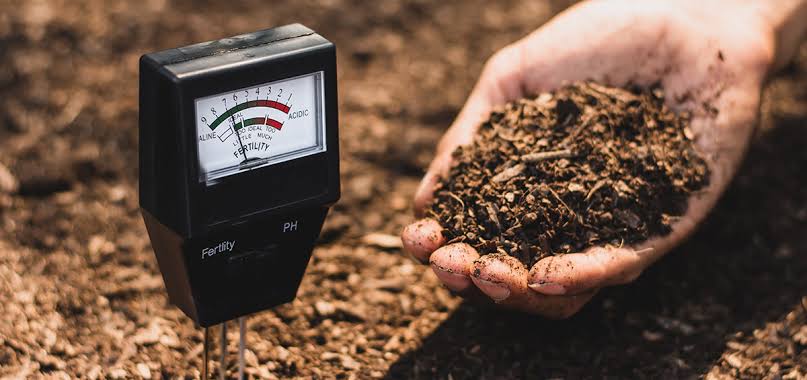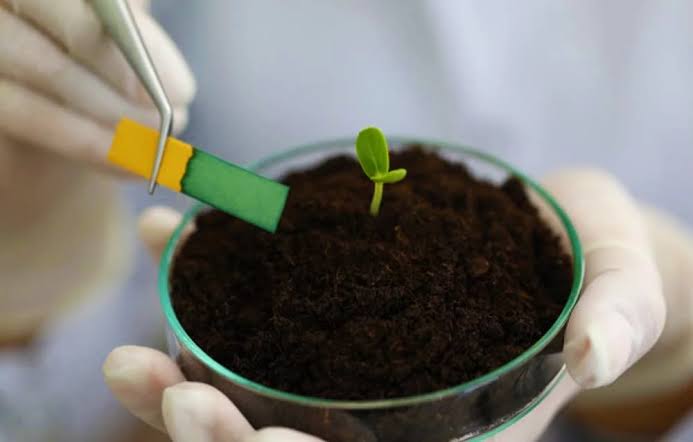Soil testing and nutrient management are vital aspects of modern agriculture. They play a crucial role in ensuring the health and productivity of our crops. In this article, we will delve into the significance of soil testing and nutrient management, their processes, and the benefits they offer to farmers.
Soil testing is the process of analyzing a sample of soil to determine its physical and chemical properties. These properties include soil texture, pH level, nutrient content, organic matter, and the presence of harmful substances like heavy metals. Soil testing provides farmers with valuable information about the condition of their soil, helping them make informed decisions about fertilization and crop selection.
Nutrient management involves the careful application of fertilizers and other soil amendments based on soil test results and crop requirements. It aims to optimize nutrient use efficiency while minimizing environmental impact.
Read Also: Rare Facts of Bobcats (Lynx rufus)
Importance of Soil Testing

1. Nutrient Assessment: Soil testing helps farmers identify nutrient deficiencies or excesses in their soil. This knowledge enables them to apply the right type and amount of fertilizers, promoting balanced plant growth.
2. pH Adjustment: Soil pH affects nutrient availability to plants. Testing allows farmers to adjust pH levels if necessary, ensuring optimal nutrient uptake by crops.
3. Cost Efficiency: By tailoring fertilization to the specific needs of their soil, farmers can avoid over-application of costly fertilizers, saving money and reducing environmental impact.
4. Environmental Protection: Soil testing helps prevent excessive nutrient runoff into water bodies, which can lead to water pollution. Proper nutrient management protects the environment.
Key Aspects of Nutrient Management
1. Fertilizer Selection: Farmers choose fertilizers that match their soil’s nutrient deficiencies, ensuring that crops receive the necessary nutrients for healthy growth.
2. Fertilizer Application Timing: Nutrient management considers when and how fertilizers are applied during the crop’s growth cycle, maximizing their utilization.
3. Precision Agriculture: Advances in technology, such as GPS-guided equipment, allow for precise application of fertilizers, minimizing waste and environmental harm.
Soil testing and nutrient management are essential tools for modern agriculture. They empower farmers with the knowledge to make informed decisions about soil health and nutrient application, leading to increased crop yields, cost savings, and environmental sustainability. By embracing these practices, farmers can cultivate a prosperous and eco-friendly future for agriculture.
Read Also: Cats and Rabbits can be Friends
Benefits of Soil Testing and Nutrient Management

Soil Testing and Nutrient Management offer numerous benefits to farmers and the environment. Here are some of the key advantages:
1. Improved Crop Yields: Soil testing helps identify nutrient deficiencies and excesses, allowing farmers to apply the right amount and type of fertilizers. This results in healthier plants and increased crop yields.
2. Cost Efficiency: By tailoring nutrient application to the specific needs of the soil and crops, farmers can avoid overuse of costly fertilizers, reducing production expenses.
3. Environmental Protection: Proper nutrient management prevents the excessive runoff of nutrients into water bodies, which can cause water pollution. This helps protect the environment and aquatic ecosystems.
4. Soil Health: Regular soil testing and nutrient management practices enhance soil health over time. Healthy soil is more resistant to erosion, compaction, and degradation, ensuring its long-term productivity.
5. Sustainability: Nutrient management contributes to sustainable agriculture by optimizing resource use. It reduces the environmental impact of farming, making it more eco-friendly.
6. Precision Agriculture: Advances in technology, such as GPS-guided equipment, enable precise application of fertilizers, minimizing waste and environmental harm.
7. Increased Profitability: Higher crop yields and reduced input costs lead to increased profitability for farmers, improving their overall financial outlook.
8. Crop Quality: Nutrient management can also enhance the quality of crops, leading to better market prices for farmers.
9. Soil Conservation: By preventing nutrient runoff and erosion, nutrient management practices help in soil conservation, preserving valuable agricultural land.
10. Regulatory Compliance: Some regions have regulations governing nutrient management to protect water quality. Following recommended practices ensures compliance with these regulations.
In addition, soil testing and nutrient management are essential practices for modern agriculture. They not only boost crop productivity and farmer income but also contribute to environmental sustainability and the long-term health of agricultural soils.
Techniques Used for Soil Testing and Nutrient Management
Below are the techniques used for both Soil Testing and Nutrient Management:
1. Soil Sampling: This involves collecting soil samples from different parts of a field at various depths. These samples are then combined to create a representative composite sample for analysis.
2. Soil Analysis: The collected soil samples are analyzed in a laboratory to determine their physical and chemical properties. Common soil tests include pH, nutrient levels (nitrogen, phosphorus, potassium, etc.), organic matter content, cation exchange capacity (CEC), and soil texture.
3. Soil pH Measurement: Soil pH can be measured using a pH meter or pH test kits. It indicates whether the soil is acidic, neutral, or alkaline, which is crucial for nutrient availability.
4. Nutrient Testing: Various methods, such as chemical extractions and spectroscopy, are used to assess nutrient levels in the soil. These tests help determine nutrient deficiencies or excesses.
5. Soil Texture Analysis: Soil texture is determined by assessing the relative proportions of sand, silt, and clay in the soil. This information is vital for understanding water retention and drainage properties.
Nutrient Management Techniques
1. Fertilizer Selection: Based on soil test results and crop nutrient requirements, farmers choose the appropriate type of fertilizer. Common fertilizers include nitrogen (N), phosphorus (P), and potassium (K), but others may be required as well.
2. Fertilizer Application Timing: Farmers consider the crop’s growth stage and nutrient demand when applying fertilizers. Split applications, where fertilizers are applied in multiple doses throughout the growing season, can optimize nutrient use.
3. Precision Agriculture: Advanced technologies like GPS-guided equipment and variable rate application systems enable precise and site-specific fertilizer application. This reduces waste and maximizes nutrient efficiency.
4. Organic Matter Management: Incorporating organic matter, such as compost or cover crops, into the soil can improve its nutrient-holding capacity and overall fertility.
5. Crop Rotation and Diversification: Rotating crops and diversifying plantings can help manage nutrient imbalances, reduce pest pressure, and enhance soil health.
6. Nutrient Budgeting: Farmers create nutrient budgets to track the inputs and outputs of nutrients on their farms. This helps maintain nutrient balance and sustainability.
7. Soil Amendments: In some cases, soil amendments like lime or gypsum may be necessary to adjust soil pH or address specific nutrient deficiencies.
8. Monitoring and Record-Keeping: Regular monitoring of crop health and nutrient levels, along with detailed record-keeping, is essential for effective nutrient management. It allows farmers to make informed adjustments as needed.
9. Soil Conservation Practices: Implementing soil conservation practices like no-till farming, contour farming, and buffer strips can help prevent nutrient runoff and soil erosion, preserving soil and water quality.
In summary, soil testing techniques provide valuable data about soil properties, while nutrient management techniques involve making informed decisions about fertilization based on that data. Together, these practices ensure efficient nutrient use, improved crop yields, and sustainable agriculture.
Read Also: How to Choose the Right Garbage Company for Your Needs
